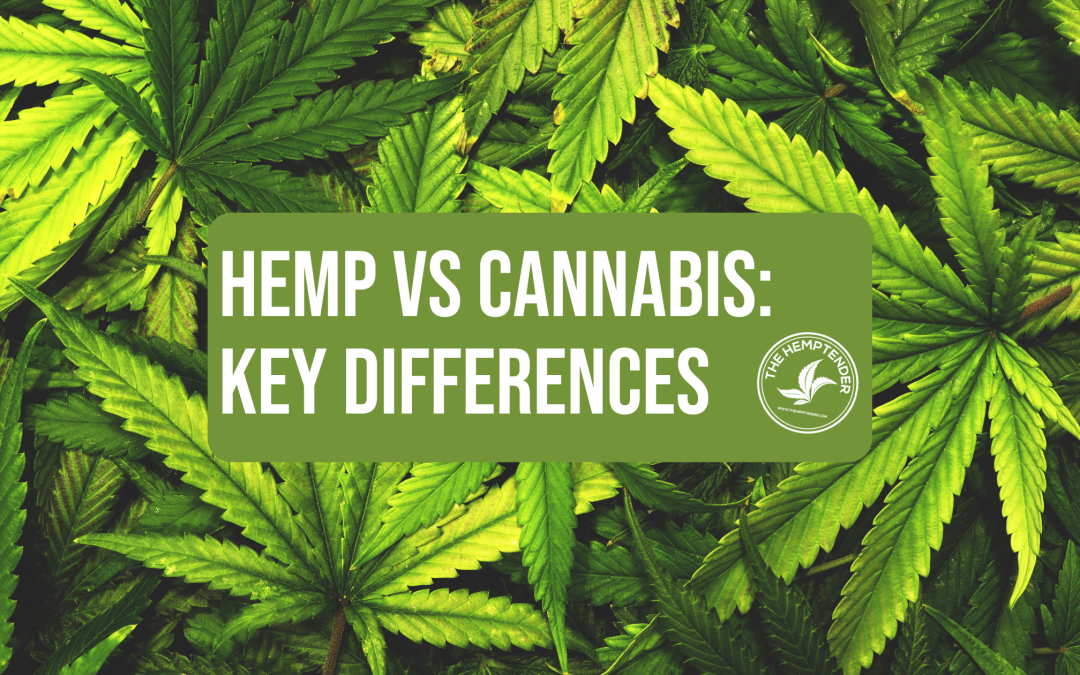Hemp and cannabis, terms often incorrectly used interchangeably, are two distinct varieties of the same plant species: Cannabis sativa. While they share a common lineage, these plants differ significantly in appearance, growth patterns, uses, and legal statuses. This article aims to shed light on the key differences between hemp vs cannabis, debunking the myths that they are different species or completely identical and exploring the regulatory framework that separates them.
What is Hemp?
Hemp, also known as industrial hemp, stands as a legal agricultural commodity in the United States. To qualify as hemp, a plant must contain less than 0.3% delta-9 THC (tetrahydrocannabinol) by dry weight, as mandated by USDA guidelines. Hemp is characterized by its tall, fibrous stalks and is cultivated primarily for industrial applications.
However, you can also find hemp products, including hemp-derived delta-9 THC products, at dispensaries like The Hemptender all over the country, thanks to a legal loophole created in 2018. We’ll touch base more on that later.
What is Cannabis?
In contrast, cannabis, often referred to as marijuana, encompasses strains of the Cannabis sativa plant that contain higher levels of THC, the psychoactive compound responsible for the euphoric effect commonly associated with marijuana. Cannabis comes in various forms, including Cannabis sativa, Cannabis indica, and Cannabis ruderalis, each with distinct properties and uses.
Historical Perspective
The history of hemp and cannabis dates back thousands of years. While the exact origins remain uncertain, evidence suggests that these plants diverged from a common ancestor in China. Over time, hemp became prized for its fibers, leading to cultivation focused on tall plants with robust stalks. Cannabis, on the other hand, evolved to produce more THC-rich flowers.
Regulatory Rollercoaster
In the United States, hemp vs cannabis faced a tumultuous regulatory history. In 1937, the Marihuana Tax Act placed severe restrictions on cannabis cultivation, effectively stalling its growth. However, during World War II, hemp experienced a resurgence as a crucial resource for rope and fiber. Yet, post-war, it returned to being labeled as illegal.
The Controlled Substances Act of 1970 classified both hemp and cannabis as Schedule 1 drugs, equating them with substances “with no currently accepted medical use and a high potential for abuse.” It wasn’t until 2014, with the passing of the Farm Bill, that industrial hemp cultivation was allowed for research purposes. Further progress came in 2018, when Congress passed the Farm Bill, permitting all states to establish legal industrial hemp programs. Simultaneously, the movement for medical cannabis legalization gained momentum.
Hemp vs Cannabis: What’s The Difference?
The primary difference between hemp and cannabis lies in their THC content. Industrial hemp legally cannot contain more than 0.3% THC and may have higher levels of CBD. Conversely, cannabis strains contain varying levels of THC and are used primarily for psychoactive purposes.
Hemp finds utility in the production of textiles, biofuels, nutritional supplements like hemp oil, and even plastics. With its potential for higher CBD content, hemp also serves as a source for wellness products.
Cannabis, with its psychoactive properties, can be used recreationally or medicinally. It can be processed into CBD and THC oils, tinctures, concentrates, and dried flower forms.
At the end of the day though, they’re the same plant and the same species. The laws help determine which one is which since hemp can only contain less than 0.3% THC by dry weight, and cannabis is classified as anything that has more than 0.3% THC.
Hemp vs Cannabis: Current Legal Landscape
Industrial hemp is now legal to grow in the United States, with varying regulations by state. To comply with federal laws, growers must register with their state’s Industrial Hemp cultivation program.
On the other hand, cannabis with more than 0.3% THC remains illegal at the federal level. However, as of late 2023, 24 U.S. states and Washington, D.C., have fully legalized weed, and 21 of them have some form of medical marijuana use.
Conclusion
In conclusion, while hemp vs cannabis share the same genetic roots, they are distinct in terms of THC content, growth patterns, and uses. Hemp is celebrated for its industrial applications, with potential wellness benefits, while cannabis is sought after for its psychoactive properties and medicinal potential. Understanding these differences is crucial for navigating the evolving legal landscape surrounding all forms of cannabis.

